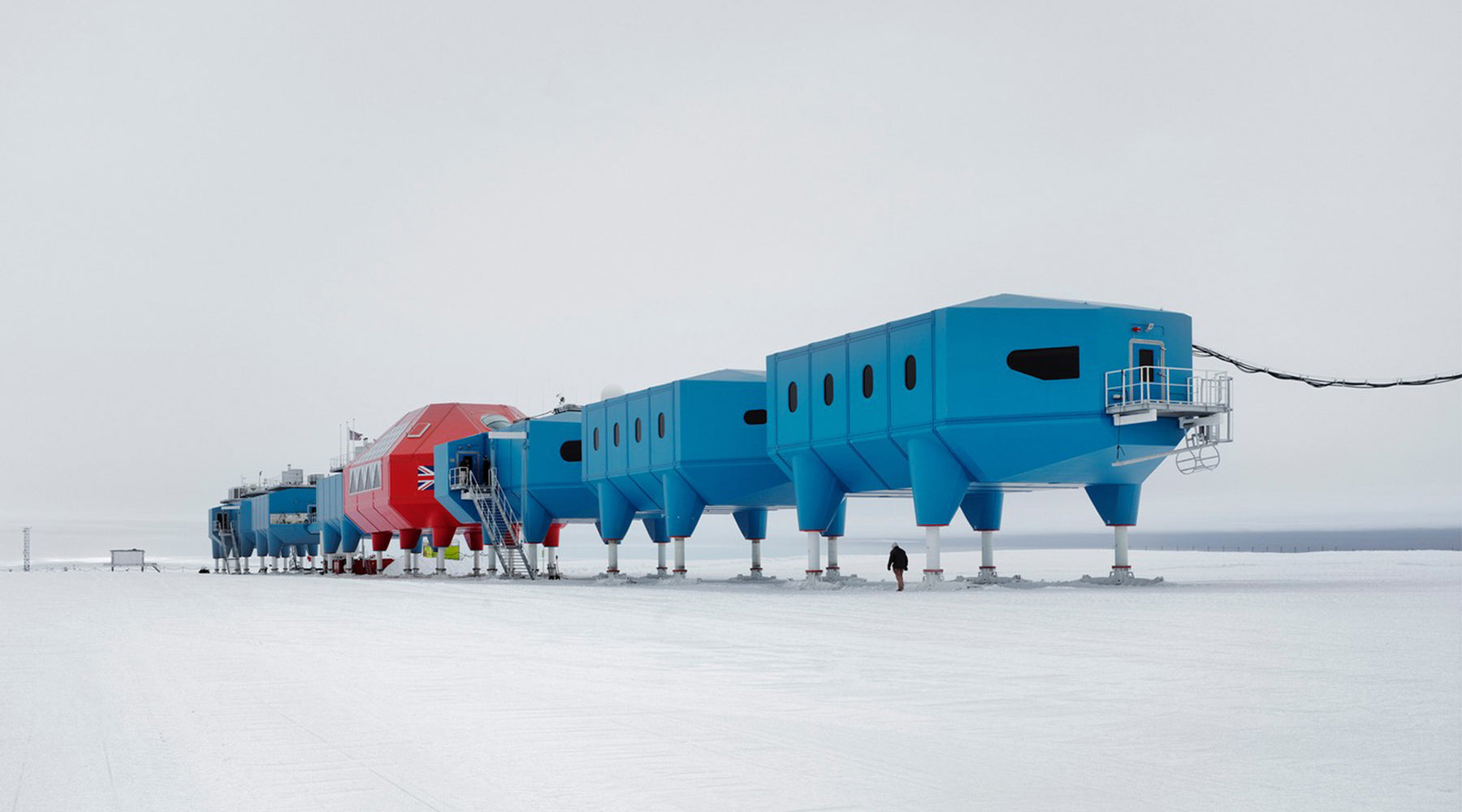
Antarctica's most innovative research stations
Antarctica is home to some of the most exciting architecture in the world, with research stations designed to withstand the harshest conditions and consider the well-being and mental health of the scientists working there. Here we look at some of the finest examples, present and future.
Hugh Broughton (one of the speakers during the inaugural Antarctica NOW festival) rewrote the rules when he designed the Halley VI station in the Antarctic. Before then, most polar architecture was nasty, brutish and fairly short-lived. Hugh won the competition to design a British research station that would last for at least 20 years in 2005 (at that point the lifespan of the Halleys ranged from six to 15 years). Unlike previous architects he was as preoccupied with the well-being of those working there as with the considerable structural challenges.
The striking futuristic result – complete with retractable hydraulic legs and skis so it can be moved from one location to another – has inspired a new aesthetic in the Antarctic. The continent, which has long been an experimenting ground for cutting-edge science and engineering, has now also become a laboratory for some of the most exciting architecture in the world.
POLAND’S HENRY ARTOWSKI ANTARCTIC STATION

A Polish design that resembles a sinuous gold centipede is set to be completed by 2023 on King George Island in Antarctica. The brainchild of the Warsaw-based Kuryłowicz & Associates, the pre-fabricated building will provide facilities for up to 29 scientists. Like all buildings in the Antarctic, the true test is how it will withstand the intense downward swoop of the region’s katabatic winds (which can gust at 75 metres a second) as well as the steady accretion of ice and snow.
The ingenious solution is that the cross-section is designed like an inverted wing, which means that the wind itself will press it into the ground. A legion of legs will raise it three metres above the ground, while the alloy of copper and aluminium that gives it its gold-coloured exterior will provide protection from the elements. By contrast the interiors are dominated by wood, based on research by the architects that has demonstrated its positive psychological impact on residents not least during the long winter nights.
BRAZIL’S COMANDANTE FERRAZ RESEARCH STATION

Teal-coloured and set on two interlinked levels, the new Brazilian station sitting on the tip of King George Island comprises 17 laboratories, a gym and a library. As well as having a low-slung aerodynamic design to combat the constant gusts and gales, it harnesses the wind’s energy through turbines and – slightly more optimistically – the sun’s energy through solar panels.
Architect Eron Costin selected carbon steel to create the structure, because the high carbon content allows it to withstand the Antarctic elements. It provides accommodation and facilities for 64 scientists, and the two-level structure on stilts ensures that every space has an outward view. This outlooking aspect along with the bright minimalist interiors is all designed to contribute to the mental and emotional wellbeing of those living there.
REDESIGN OF BRITAIN’S ROTHERA RESEARCH STATION

Following his brilliant design of Halley VI, Hugh Broughton has worked on several projects in the Antarctic. These include the Juan Carlos I Spanish base, the ongoing redevelopment of Scott Base for Antarctica New Zealand, and the modernisation of the Rothera Research Station for the British Antarctic Survey which is scheduled for completion in 2023.
Created in combination with the engineering consultants Ramboll, the latter is a cutting-edge facility on Adelaide Island designed to mark Britain out as a leader in biodiversity and ocean research in the polar regions. It will have the largest scale wind and snow deflector on the continent, as well as being made of insulated pale blue panels which beyond being aesthetically attractive will reduce the impact of UV rays.
Named the Discovery Building, when completed it will be two storeys high and 4500m2. It will have a control tower with 360-degree views over the station and landing strip. Beyond this there will be open-plan work spaces, a medical facility, a central store, science workshops, a music room and a climbing wall.
Watch Hugh Broughton’s live talk HERE.



